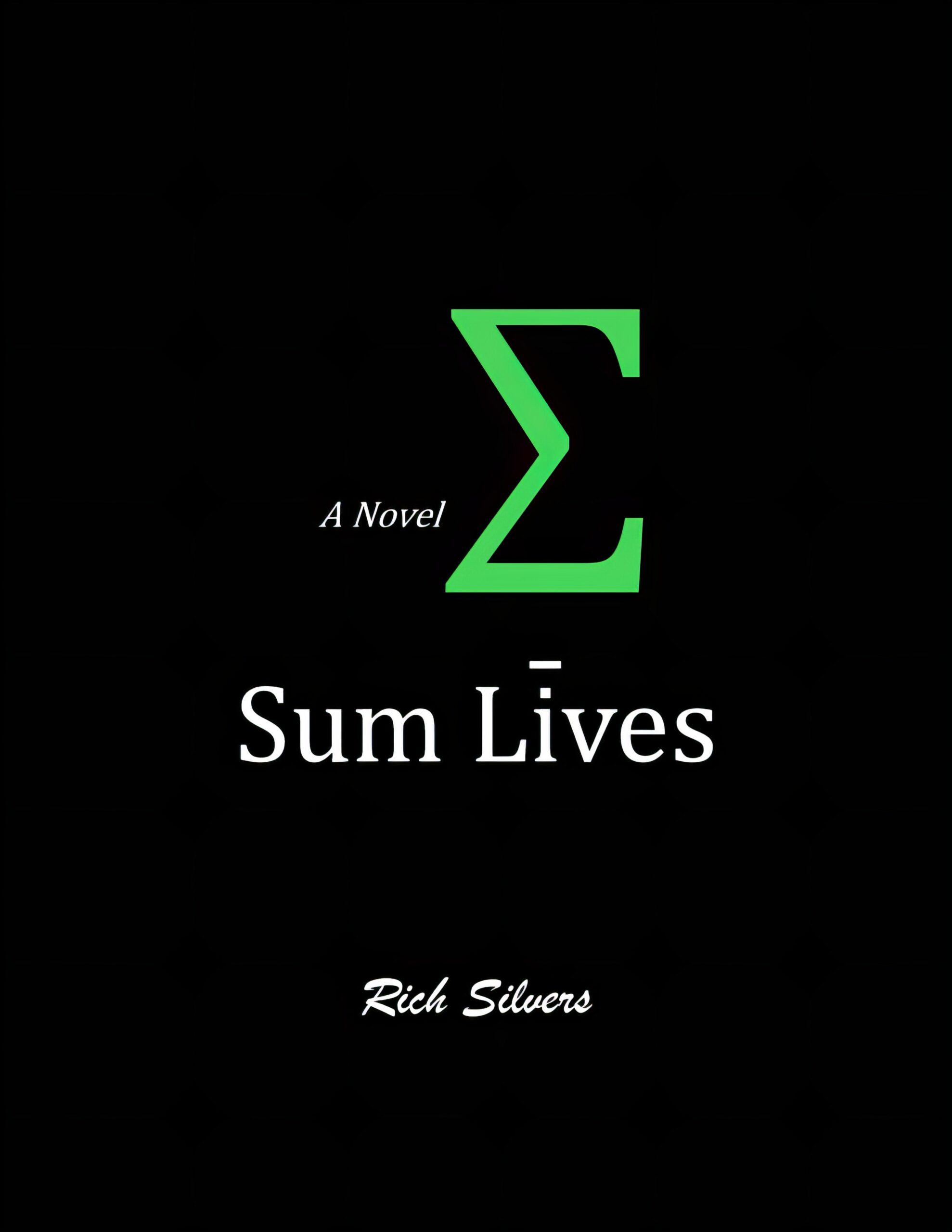Mark Holder and his business partner, Steven McDolmades, have founded a company called Sum Lives, where they are developing a battery that could revolutionize the world. With the potential to curb humanity’s reliance on fossil fuels, their invention could significantly benefit the environment. However, it could also lead to the loss of millions of jobs. As they press on with their plans, a sinister rival, the billionaire Dimitri Hayden (who has a personal vendetta against disruptive technology) has embedded an industrial spy within their organization. What will happen when they uncover the mole? Will that discovery force them to reconsider their ambitions? To complicate things further, Mark has fallen in love with a woman whose priorities are more aligned with spiritual and emotional matters than with start-up companies and technological innovation.
The narrative in Rich Silvers’s literary thriller SUM LIVES is divided among the perspectives of its three major characters: the entrepreneurial inventor Mark Holder, his love interest (the artist Deja Richardson), and the nefarious Eric Nolan (the undercover operative). Though never overly dramatic and with more talk than action, Silvers manages to engage the reader with his tale of industrial espionage, cutting-edge technology, and complications of the heart. He is convincing when it comes to the science behind the project and the strange brilliance of Mark, the inventor who, after taking a drink he has labelled a Dextro Cocktail, thinks things like this: “The liquid cools my esophagus and snakes its way through my central nervous system producing boatloads of acetylcholine, a stimulant for my brain to binge on.”
Elsewhere, the question of whether technological advances are always worth the human cost of a laid-off workforce and subsequent poverty is thoughtfully explored by the author, with Nolan and his puppeteer (the shadowy consultant Hayden) serving as devil’s advocates. Hayden’s agenda is to protect the middle- and lower-class jobs. As he says to Nolan before sending him on his mission: “It’s ironic. In developing countries, technology has increased the standard of living for the poor, but it’s gone the opposite way in the developed ones.” As far as Hayden is concerned, Sum Lives must not succeed.
Silver’s female characterization is less confident. Deja in particular (a supposedly sophisticated and inspired painter) is rather underwritten. More of a decorative presence and plot device than a believable female force, her interior monologue often feels rote and simplistic. For instance, when she meets Mark for the first time, she is instantly simpering: “I’ve never had such a strong, immediate connection with a man before. This makes me ecstatic and scares the bejesus out of me.” Their subsequent romantic journey never fully convinces and somewhat dilutes what could have been a far more gripping central story. Although Deja is given one-third of the book’s narrative, she never truly has agency or a believable voice of her own—especially after the couple have become an item. While Silvers shows he is capable of spinning a compelling yarn, much of the novel’s momentum is snagged by this romantic subplot that doesn’t quite justify its place in the story.
Rich Silvers’s SUM LIVES is well-written and raises some interesting moral questions in the context of the cutthroat world of corporations and technology.
~Kent Lane for IndieReader


